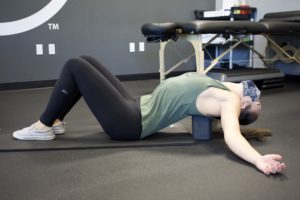As a Eastern Sierra Nevada native I grew up hiking. There was a period of time for almost ten years where my dad and I would hike Mt. Whitney every year- the most BRUTAL rewarding hike EVER. Now, living in San Diego, I try to get out and hike once a week, whether that’s for a short route in Mission Trails or in one of the beautiful state parks that surround us.
As a Doctor of Physical therapy at Sports Performance, I’m always thoughtful of ways that I can help people stay strong, prevent injury, minimize aches and pains, and stay hydrated on the trail! Hiking in San Diego is a beast! It’s usually involves elevation, precarious footing, uneven terrain, and HEAT! That said, it is beautiful and I believe that there are a few things that we can do to keep ourselves moving well.
Functional strength is one area that is paramount to hiking in San Diego. With the elevation gains, losses and giant granite rocks that need to be traversed, functional strength and the ability to walk up and down thousands of steps is a real thing. You don’t need to spend hours of time in the gym to gain or keep this strength throughout your week though.
A quick and easy way to work on this is to use stairs whenever you get the chance.
Another way, and one of my favorite exercises, to gain or maintain this strength is loaded step ups and step downs. Below is the link to the exercise and how to perform it correctly and safely. Gaining functional strength and the endurance to go for your chosen length of hike will help to prevent overuse injury.
Another area to work on is balance. Balance, especially, related to hiking means that we have to be able to step on various terrain and using our muscle and joints to keep us upright when footing shifts or slipping on loose gravel. Below are two of my favorite exercises that are easy to do in your home or when you have a few spare seconds. Keeping upright and the ability for your body to get out of dangerous ground will definitely help to minimize and prevent injury.
Spending time on your flexibility will help reduce those aches and sores too! What is the first thing you do when you finish a hike besides get a snack? You get in your car and drive to the nearest brewery, errr, I mean home, honey. And after the twenty to forty minute drive you try to get out of the car and can barely move for the first couple of minutes.
A quick way to stay ahead of this soreness is to take five minutes at the end of your hike and do these stretches!
Now, all of this is great. It will get you strong, help prevent injury and minimize aches and soreness, but we’re missing one thing…and that is hydration. It’s all fun and games until you get heat exhaustion! Make sure you have adequate water before the hike, bring enough water, and take ample water breaks while on the hike. I like a Camelback (no financial investment)…that way I can constantly sip water throughout the time I am out there. However, if I only have water bottles, I make sure to stop regularly to drink water. Enjoy these tips and hike safely.
Have fun out there!
-Dr. Nick Schroeder, PT, DPT
For more tips on optimizing athletic performance FOLLOW US on:
- Instagram: http://www.instagram.com/SportsPerformancePT
- Facebook: http://www.facebook.com/SportsPerformancePT
- YouTube: http://www.youtube.com/c/SportsPerformancePT












